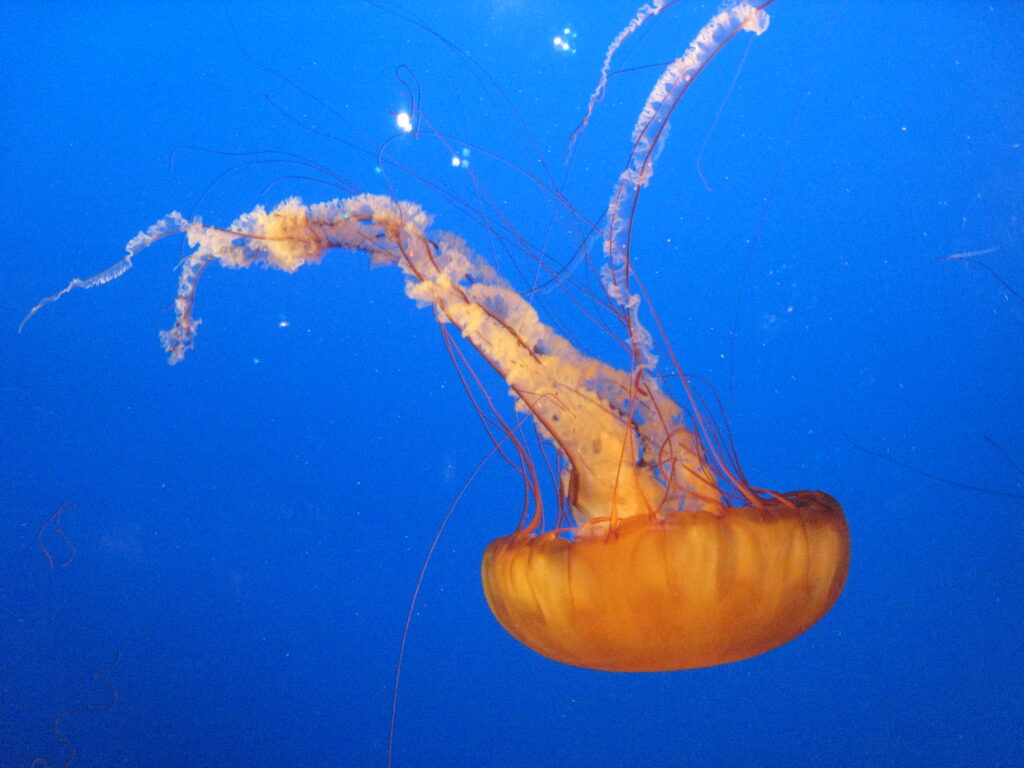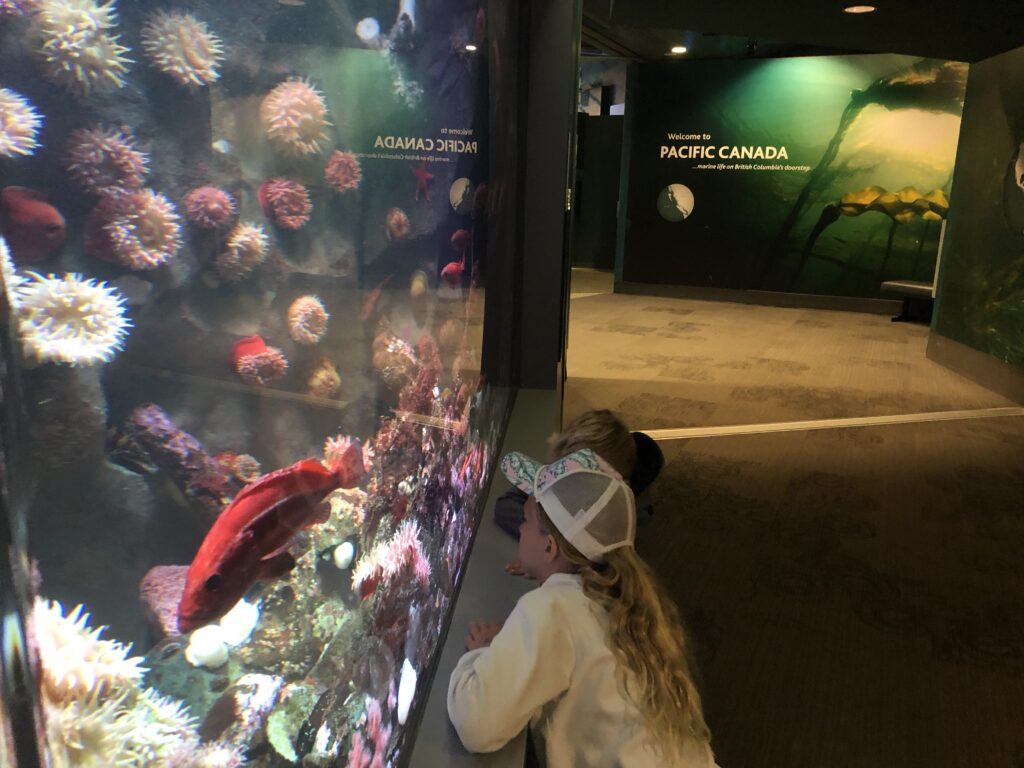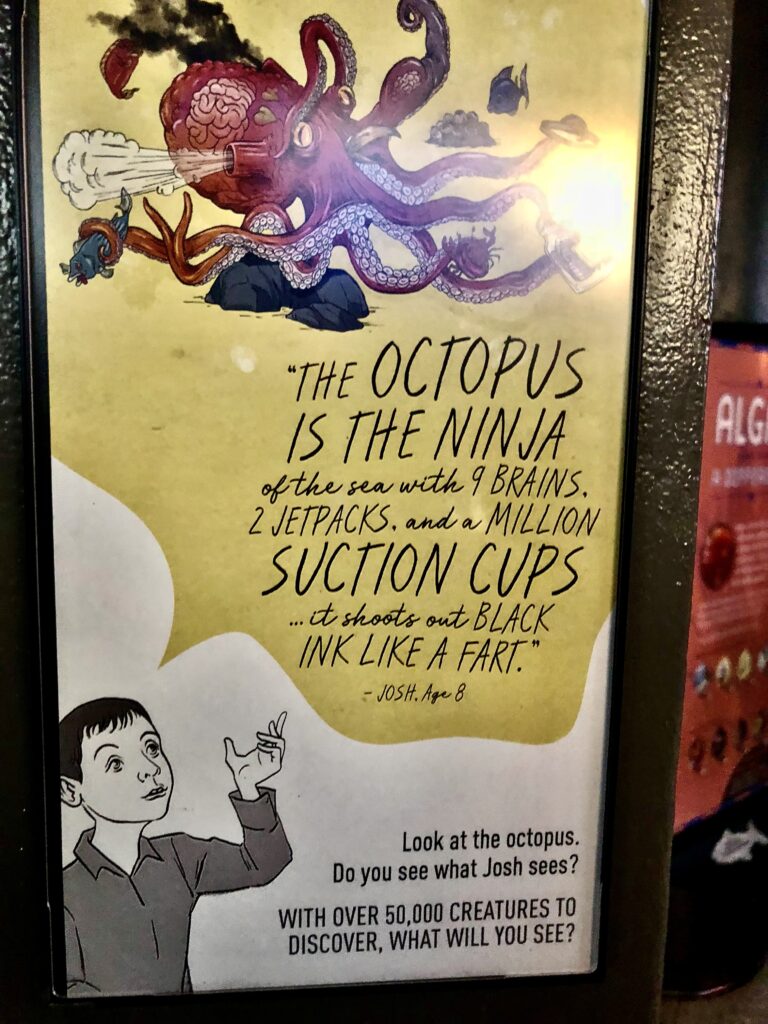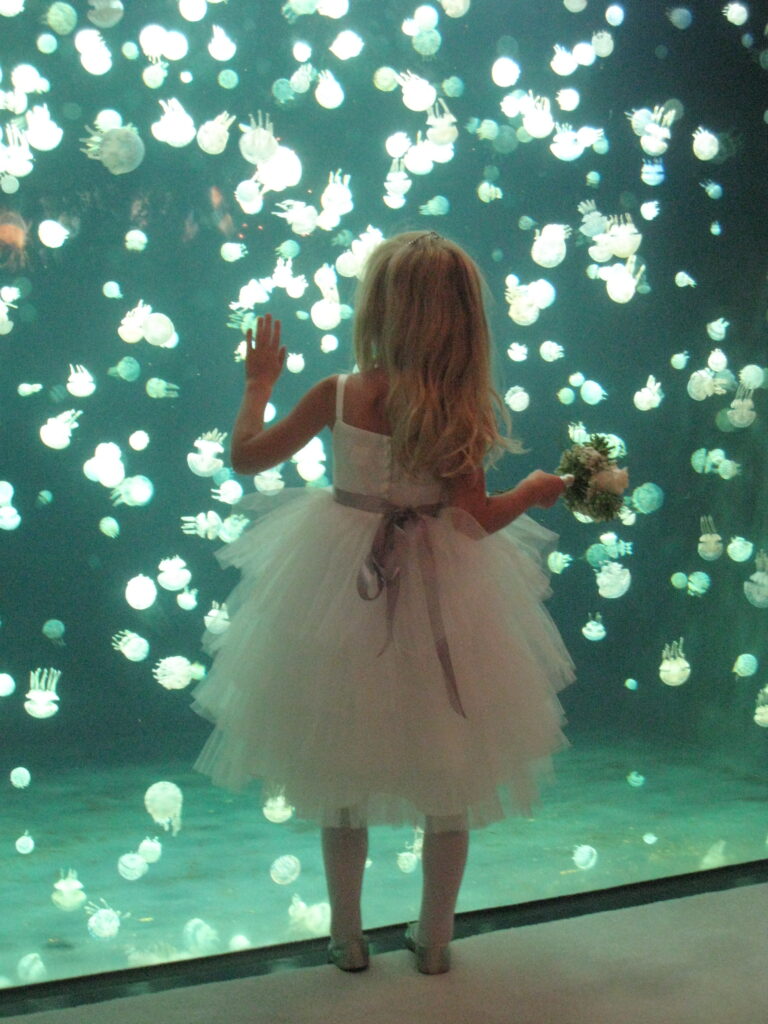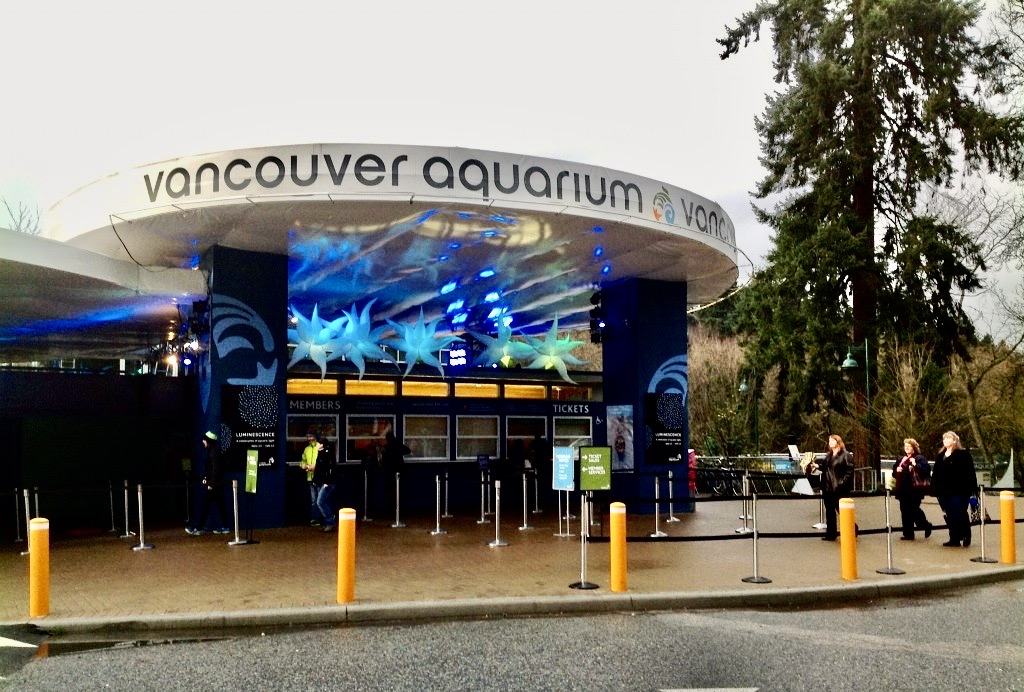I am looking at a creature with no bones, no heart, no brain, and no eyes. Shredded ribbons of white jelly drift away from its flamboyant bell-shaped body. And yet the orange jellyfish is only one of the fascinating exhibits of the Vancouver Aquarium. What’s more, you never see the same thing twice.
Like most people around me, I look at the tanks while keeping up with children who are either glued to a tank or darting to the next best thing. I barely manage to read the AquaFacts, the fascinating information each tank displays to prepare for the inevitable questions on the way home: jellyfish are 96 percent water, their tentacles are transparent because they are drifters and can’t hide to catch their prey, plus they have been around longer than dinosaurs ever were. I get it and move to the next exhibit.
Something About the Vancouver Aquarium
One of the largest aquariums in North America, it’s located in Stanley Park, a peninsula situated on the northern side of Vancouver. It was the first aquarium to employ full-time professional naturalists to explain animal behaviors at galleries and exhibits. The Vancouver Aquarium Marine Mammal Rescue Center program is also one of the largest in the world: some 150 marine animals are cared for, rehabilitated, and released each year.
With no revenue during the pandemic and a monthly cost of one million dollars, the closure of the aquarium was imminent when an operator took over from Ocean Wise in the spring of 2021. It nevertheless continues as an independent non-profit facility.
The aquarium is also a venue for special events, and where our family held a memorable wedding. A flurry of white jellyfish was a unique background for photographs. Later, otters entertained the children with their playful tricks through the glass wall of the underground viewing/festivity area.
The Aquarium as a University Research Center
Like zoos, aquariums have their detractors, but marine biologists—who also study species in their natural habitat—cannot advance environmental conservation without researching captive animals. That’s why the Vancouver Aquarium doubles up as a marine research center for UBC, the University of British Columbia.
On the positive side, the species that live in aquariums are not exposed to pollution, illegal trade, overfishing, and climate change and are therefore protected from extinction. In a way, the 70,000 creatures that live at the Vancouver Aquarium advocate for their species. Furthermore, the exhibits, galleries, and other special encounters with the animals connect visitors to the natural world and raise awareness of their plight in the wild.
In the wild or in captivity, life ends one way or another. Not forgotten is Kavna, the 46-year-old white beluga that delighted visitors and died of old age. Sadly, however, in 2016 the two remaining belugas died from a short-lived illness perhaps due to a toxin. Their legacy is the unanimous vote of the Board to end all displays of porpoises, whales, or dolphins: caring for large mammals in tanks is not as humane as once thought.
The Marine World of Electronics
The children are happy to hear that the five seal pups recently released in the wild are doing well. “How do we know?” one asks. A satellite-linked transmitter monitors their whereabouts and behavior. The interrogative looks on their faces bring an answer before they even ask, “Don’t worry, the tags will come off when the pups molt,” the marine scientist says.
Then they want to know why the dolphins needed rescuing: fishing nets are as dangerous as natural predators. The scientists are developing a sonar device that will alert dolphins of danger.
Sometimes, facts lead to thoughts far afield, such as… the origin of physics. Take the electricity-producing eels, for example. Its method to make electricity is as ‘simple’ as their heads being positive and their tails being negative.
The aquarium is full of surprises too. Even Santa Claus left a message, warning us that he is on thin ice as the North Pole’s ice cap melts away.
On the way home, we test ourselves, remembering the Treasures of the B.C. Coast exhibit: slime-producing hagfish, bum-breathing sea cucumbers, the giant Pacific octopus who is smart enough to open a jar, and other creatures that bring the song “What a Beautiful World” to mind.
